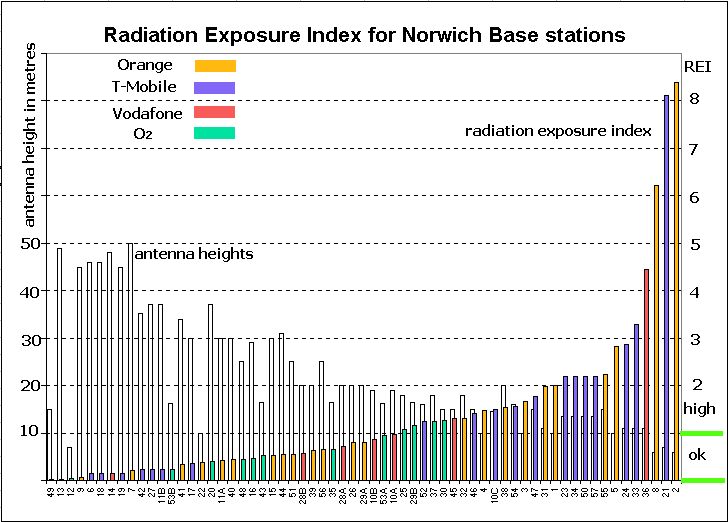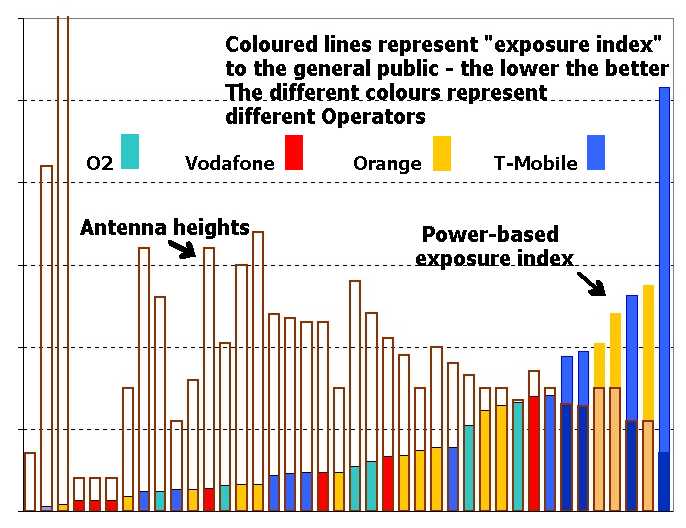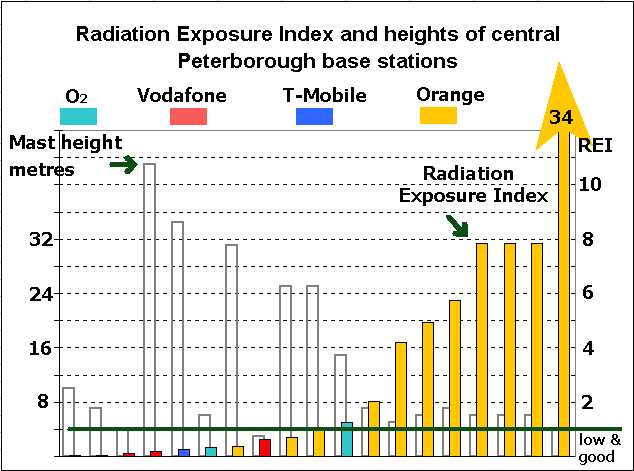 |
 |
|
 |
 |
About Us | Contact |
|
|
25/03/2003 - REI - Radiation Exposure IndicesSince this story was first written in 2001, Orange have turned down the power of many of their low-height base stations - an excellent move, though Orange still has most of the highest power. However we suggest that you look up all the base station near to you on the government's http://www.sitefinder.ofcom.org.uk database and work out the Radiation Exposure Index for yourself (details of how to do this are below) and check it it is under 1 if it is near houses (at least under 2 as an absolute maximum). T-Mobile announced on Friday 22nd Nov 2002 that more (25,000+) phone masts will be required to keep up with the growing demand for services and coverage. Powerwatch point to T-Mobile's change of direction since it took over the One2One business. One2One had an exemplary approach to mast installations complying with Government planning guidance that "Mobile Phone Operators already keep their RF power outputs to the lowest possible levels commensurate with effective service provision". Since it became T-Mobile this is no longer to be the case - with masts all over the UK, in Shell Petrol Station Signs, on lampposts and in plastic lookalike telegraph poles that do not comply with this requirement. Powerwatch's Radiation Exposure Index clearly indicates the increased impact on the public since the introduction of low height, high power and frequently hidden masts and base stations, many under 15 metres in height and not requiring planning permission prior to installation. If there is a health risk and we are told there will not be any conclusive evidence for several years, then the relative risk of of that health effect has increased exponentially since Government opened the floodgates for such covert activities. Jeff Rooker, Planning Minister, stated in November 2002 that "Best Practice needs to be spread widely". Powerwatch believes that we need to look to mainland Europe for "Best Practice" where standards are often 10-20 times more stringent than they are in this country. However, in the UK, MMO2 usually seems to apply reasonable precautionary practice, and Vodafone usually do quite well. Orange and T-Mobile do not operate best practice to keep the exposure of the general public to microwaves from their base stations to the lowest practical levels. If operators need to expand their services they should be required to do so transparently under the "Precautionary Approach" advocated by Government (following the May 2000 Stewart Report) but still to be delivered in practice. Ian Gibson, Labour MP for N.Norwich and Chair of the Science & Technology Committee, calls on the UK Government to tighten guidelines surrounding radiation levels on mobile phone masts. Dr Gibson, MP for Norwich North and a cancer expert, said the new research by Powerwatch showed Britain was too relaxed about radiation levels and was placing the long-term health of people at risk.
|




